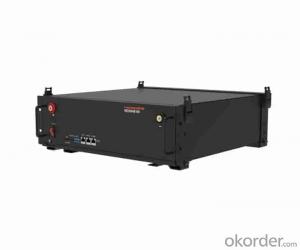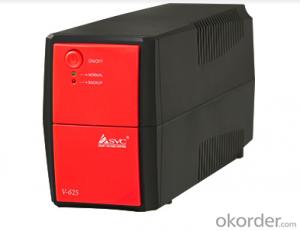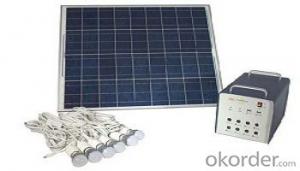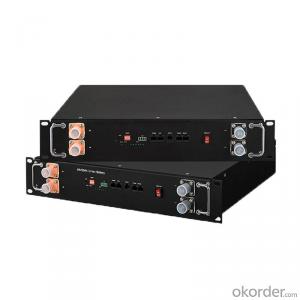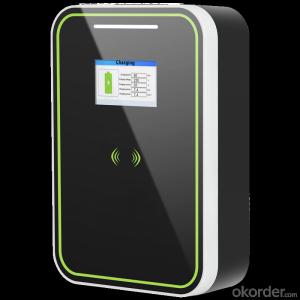Narada 51.2v lifepo4 20kw 10kw off grid lithium battery for homehold solar energy storage system
- Loading Port:
- SHANGHAI
- Payment Terms:
- TT OR LC
- Min Order Qty:
- 50 set
- Supply Capability:
- 5000 set/month
OKorder Service Pledge
Quality Product, Order Online Tracking, Timely Delivery
OKorder Financial Service
Credit Rating, Credit Services, Credit Purchasing
You Might Also Like
Item specifice
Application:
Home
Output Voltage (V):
51.2v
Work Time (h):
8 hours
Introduction:
Solar energy preferably used by domestic appliances, and additional Energy is stored in battery.
During the day, when battery is fully charged, the additional energy produced by solar can be sold and fed into the public .
At evening, the energy stored in the battery supplies electriciity to the domestic appliances.
At night, when the energy stored in the battery is depleted, the public grid supplies energy to the domestic appliances.
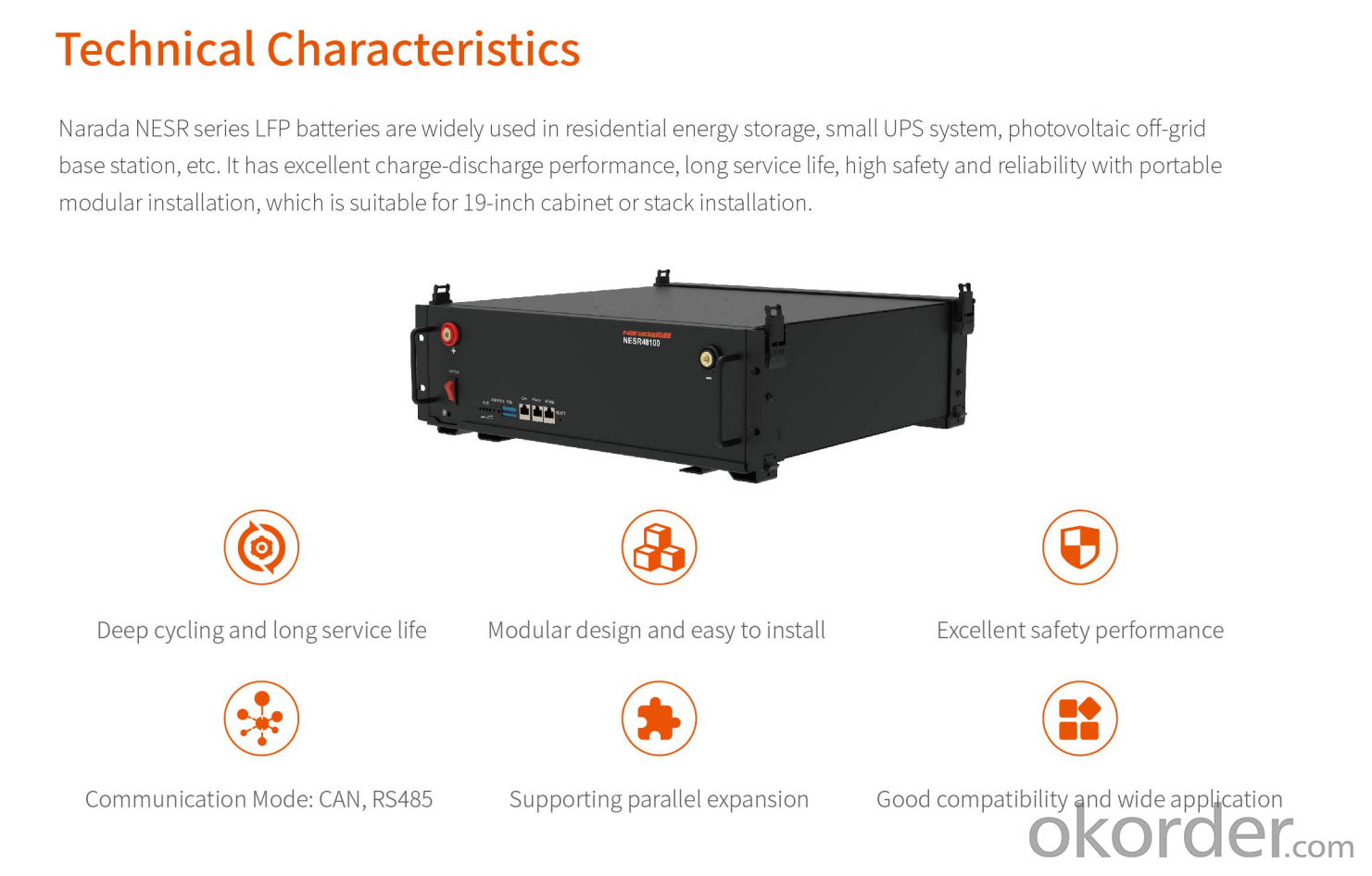
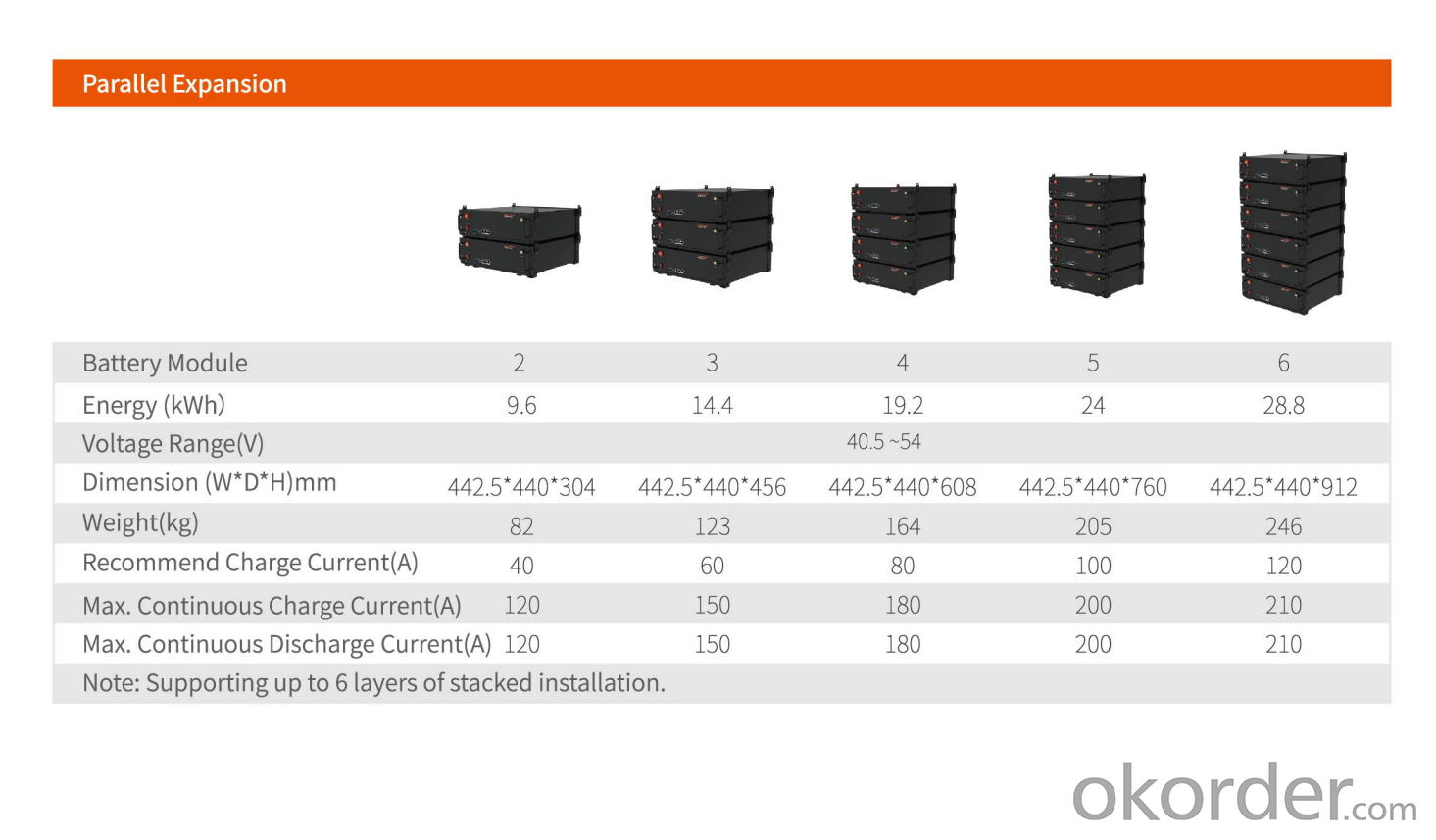
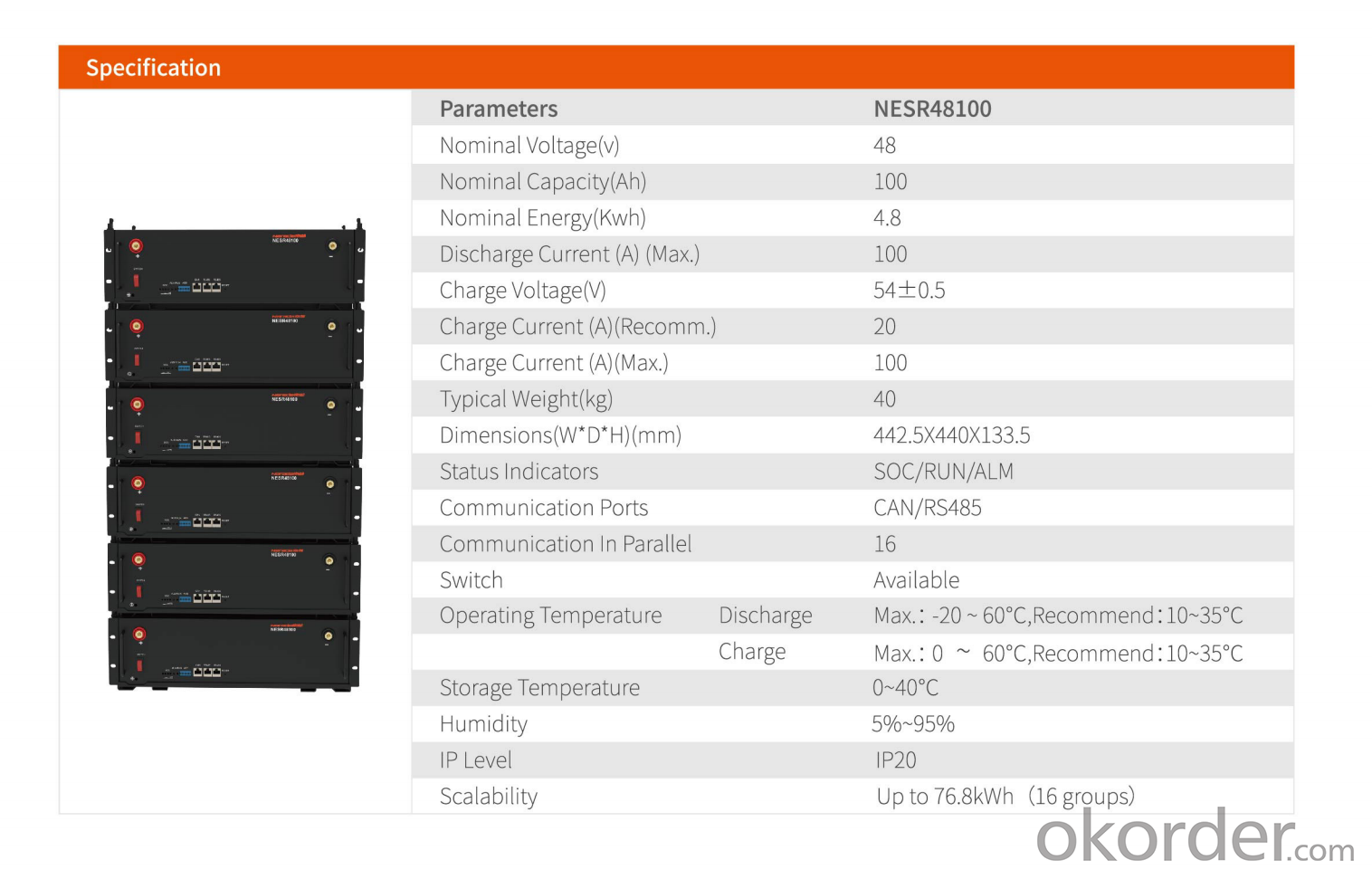
- Q:How can solar energy systems reduce electricity bills?
- Generating free and renewable energy from the sun, solar energy systems have the potential to significantly decrease electricity bills. Unlike conventional electricity sources like fossil fuels, solar energy doesn't necessitate ongoing expenses for fuel or maintenance. Once installed, a solar energy system can produce electricity for many years, offsetting a substantial portion of a household's or business's electricity usage. By utilizing the power of the sun, solar energy systems can generate electricity when it is most in demand during daylight hours. Consequently, solar energy can directly compensate for electricity consumption during peak times, diminishing the need to draw power from the grid. Consequently, electricity bills can be drastically reduced or even eliminated, depending on the size and efficiency of the solar energy system. Furthermore, solar energy systems often provide homeowners and businesses with the opportunity to take advantage of numerous financial incentives and programs. These incentives may include tax credits, grants, or policies such as net metering, which allows surplus solar energy to be fed back into the grid and credited towards future electricity bills. These incentives can augment the financial advantages of installing solar energy systems, making them even more cost-effective. Additionally, solar energy systems offer long-term savings. As the cost of electricity from conventional sources continues to escalate, solar energy remains a steadfast and predictable investment. By securing a fixed cost for electricity generation, solar energy systems safeguard against future price hikes and inflation, ensuring that electricity bills remain low and foreseeable for years to come. Overall, solar energy systems provide a sustainable and economically viable solution for reducing electricity bills. By tapping into the abundant and free energy of the sun, households and businesses can enjoy substantial savings, financial incentives, and long-term stability in their energy costs.
- Q:What is the impact of solar energy systems on reducing energy poverty?
- Solar energy systems have a significant impact on reducing energy poverty by providing access to affordable and sustainable electricity to communities that lack reliable access to traditional power grids. One of the key advantages of solar energy systems is their ability to generate electricity from sunlight, which is available in abundance in many parts of the world. This means that even in remote and underserved areas, solar energy systems can be installed to generate clean energy, thereby reducing dependence on expensive and polluting fossil fuels. By harnessing the power of the sun, solar energy systems can bring electricity to households, schools, and healthcare facilities in rural areas that were previously reliant on costly and unreliable alternatives such as kerosene lamps or diesel generators. This not only improves the quality of life for individuals and communities but also enables economic development by enabling access to modern technologies and opportunities. Furthermore, solar energy systems also contribute to reducing energy poverty by providing a stable and reliable energy source. Since solar panels require minimal maintenance and have a long lifespan, once installed, they can continue to generate electricity for years, thereby reducing the risk of power outages and ensuring a consistent energy supply. Moreover, solar energy systems can also empower communities by enabling them to become energy-independent and self-sufficient. By installing solar panels on rooftops or utilizing solar-powered mini-grids, communities can generate their own electricity and reduce their reliance on centralized energy systems. This not only increases energy security but also creates opportunities for income generation through the sale of excess electricity back to the grid. In summary, solar energy systems play a crucial role in reducing energy poverty by providing affordable and sustainable electricity to underserved communities. They not only improve the quality of life for individuals but also contribute to economic development and empower communities to become self-reliant. By leveraging the abundant and renewable energy of the sun, solar energy systems have the potential to transform the lives of millions of people and help alleviate energy poverty globally.
- Q:Can solar energy systems be used for powering wastewater or sewage treatment plants?
- Wastewater or sewage treatment plants can indeed utilize solar energy systems. Solar panels or solar thermal systems can be employed to harness solar energy, generating electricity or heat to power various processes in these treatment plants. To generate electricity, solar panels convert sunlight into usable energy through photovoltaic cells. These panels can be installed either on rooftops or open fields near the treatment plants. The electricity produced can then be utilized to power pumps, blowers, and other necessary equipment in the treatment process. By adopting solar energy, these plants can significantly reduce their dependence on traditional grid electricity, resulting in cost savings and a diminished carbon footprint. On the other hand, solar thermal systems utilize the sun's heat to generate hot water or steam. This heat can be effectively used in the treatment process, particularly for heating water or sludge. Integrating solar thermal systems into the existing infrastructure of treatment plants provides a sustainable and renewable source of thermal energy. In addition to cost-effectiveness and environmental benefits, solar energy systems offer the advantage of decentralization and independence from the grid. As a result, even in remote areas or during power outages, wastewater or sewage treatment plants can continue to operate efficiently. Overall, employing solar energy systems to power wastewater or sewage treatment plants is a feasible and sustainable approach that contributes to a cleaner and more energy-efficient water management system.
- Q:Can solar energy systems be used in powering desalination plants?
- Yes, solar energy systems can be used to power desalination plants. Solar-powered desalination systems use solar panels to convert sunlight into electricity, which is then used to power the desalination process. This sustainable approach not only reduces reliance on fossil fuels but also helps address the water scarcity issue by producing freshwater from seawater in an environmentally friendly manner.
- Q:Can solar energy systems be used for heating water in commercial buildings?
- Yes, solar energy systems can be used for heating water in commercial buildings. Solar water heating systems use the sun's energy to heat water, which can then be used for various applications including heating water for commercial purposes. These systems typically consist of solar collectors that absorb sunlight and convert it into heat, which is then transferred to a storage tank to provide hot water. This renewable and sustainable approach can help reduce energy costs and carbon emissions in commercial buildings.
- Q:What is the impact of roof pitch on the performance of solar panels?
- The performance of solar panels is significantly impacted by the roof pitch, which refers to the angle at which the roof is sloped. Various factors, such as geographical location and desired energy output, determine the ideal roof pitch for solar panels. One of the main effects of roof pitch on solar panel performance is the amount of sunlight the panels receive. The angle of the roof determines how directly sunlight hits the panels. Generally, a steeper roof pitch allows for better solar panel performance as it maximizes sun exposure throughout the day. This is particularly important in areas with lower solar irradiance or during seasons with shorter daylight hours. Another important factor to consider is the self-cleaning effect of roof pitch. A steeper roof angle helps rainwater naturally clean the solar panels, reducing the accumulation of dust, dirt, and debris. This helps maintain panel efficiency over time, as a cleaner surface enables better light absorption. Moreover, the roof pitch impacts the efficiency of snow shedding. In regions with heavy snowfall, a steeper roof pitch allows snow to slide off more easily, preventing snow accumulation on the panels and ensuring their functionality during winter months. However, it's important to note that the impact of roof pitch on solar panel performance is not linear. While a steeper roof pitch can offer advantages, there is an optimal angle that maximizes energy production based on the specific latitude of the installation site. This is typically calculated by considering factors such as the sun's angle of incidence and the time of year. In conclusion, the roof pitch plays a crucial role in the performance of solar panels by affecting sunlight exposure, facilitating self-cleaning, and aiding snow shedding. Choosing the appropriate roof pitch based on geographical location and energy goals is essential to optimize the efficiency and effectiveness of solar panel installations.
- Q:What is net metering and how does it work with solar energy systems?
- Net metering is a billing arrangement that allows solar energy system owners to receive credit for the excess electricity they generate and feed back into the grid. When a solar energy system produces more electricity than is being consumed, the surplus is sent back to the grid, and the owner's electric meter runs backward, effectively offsetting their future electricity consumption. This enables solar energy system owners to save on their electric bills and encourages the adoption of renewable energy by incentivizing the production of clean, sustainable power.
- Q:Can solar energy systems be used for powering electric plane systems?
- Yes, solar energy systems can be used to power electric plane systems. In fact, the idea of using solar power for aviation has gained significant traction in recent years. Solar panels can be installed on the wings and fuselage of an aircraft to capture sunlight and convert it into electricity. This electricity can then be used to power the plane's systems, such as navigation, communication, lighting, and auxiliary power units. While it is currently not feasible to solely rely on solar power for the main propulsion of a commercial plane due to the limited energy density of solar panels, solar energy can still play a valuable role in reducing the overall energy consumption of an aircraft. By utilizing solar power for auxiliary systems, electric planes can significantly reduce their reliance on traditional fossil fuel-based power sources. Solar-powered electric planes have already shown promising results in various experimental and small-scale projects. For instance, Solar Impulse 2, a solar-powered aircraft, completed a round-the-world journey in 2016, demonstrating the potential of solar energy in aviation. Additionally, NASA has been actively exploring the application of solar energy in their electric aircraft research. However, there are still challenges to overcome in order to fully integrate solar energy systems into commercial aviation. The efficiency and weight of solar panels need to be improved to generate sufficient power for larger aircraft. Additionally, advanced energy storage technologies must be developed to store excess solar energy for use during low-sunlight conditions or nighttime flights. Despite these challenges, the potential benefits of using solar energy in aviation are significant. Solar-powered electric planes have the potential to reduce carbon emissions and dependence on fossil fuels, leading to a more sustainable and eco-friendly aviation industry. As technology continues to advance, the integration of solar energy systems into electric plane systems will likely become more feasible and widespread.
- Q:Can solar energy systems be used in areas with limited roof space due to chimneys or vents?
- Indeed, solar energy systems can still function effectively in areas where roof space is restricted due to chimneys or vents. Although solar panels typically require unobstructed roof space to achieve optimal efficiency, there are alternative solutions accessible for areas with limited roof space. One feasible approach involves installing solar panels on adjacent flat or sloped surfaces, such as the ground or a nearby wall. These ground-mounted or wall-mounted solar systems can be adjusted to maximize exposure to sunlight, ensuring that the panels generate a substantial amount of energy. Another solution entails utilizing solar technologies specifically designed for limited roof space. For instance, solar tiles can be seamlessly integrated into the roof itself, replacing conventional roofing materials while simultaneously harnessing solar energy. These solar tiles can be installed around chimneys, vents, or any other obstructions on the roof, efficiently utilizing the available space. Furthermore, solar energy systems can be combined with other renewable energy sources, such as wind turbines or geothermal systems, to compensate for the limited roof space. By diversifying the sources of renewable energy, it becomes possible to meet the energy requirements of an area even with restricted roof space. In conclusion, despite the challenges posed by limited roof space due to chimneys or vents, there are still viable options for employing solar energy systems. By exploring alternative mounting options, utilizing solar tiles, or combining solar with other renewable energy sources, it becomes feasible to harness solar power in areas with restricted roof space.
- Q:What is the difference between a grid-tied and off-grid solar energy system?
- A grid-tied solar energy system connects to the local electricity grid, while an off-grid solar energy system operates independently and is not connected to the grid. In a grid-tied system, electricity is generated from the sun by solar panels and converted into usable AC power through an inverter. This power is used by the household or business where the system is installed. If the solar panels produce more electricity than is consumed, the excess power is sent back to the grid, resulting in possible credit or payment from the utility company. When the solar panels do not generate enough power, electricity is drawn from the grid, ensuring a continuous and reliable power supply with the grid serving as a backup. On the other hand, an off-grid solar energy system is designed to operate independently from the grid. It typically includes a battery bank to store surplus electricity generated by the solar panels. This stored power can be used when the panels do not produce enough. An inverter is also required to convert the solar panels' DC power into usable AC power. Off-grid systems are commonly used in remote areas where connecting to the grid is expensive or impractical. The main difference between the two systems lies in their level of independence and connection to the grid. Grid-tied systems offer the advantage of selling excess electricity back to the utility company, potentially saving costs or generating revenue. They also provide a reliable power supply by using grid power when solar production is low. On the other hand, off-grid systems provide complete energy independence and do not rely on the grid. However, they require careful planning and sizing to ensure sufficient power availability at all times since there is no grid backup. Additionally, off-grid systems often necessitate more complex equipment, such as batteries, for storing and managing electricity.
1. Manufacturer Overview |
|
|---|---|
| Location | |
| Year Established | |
| Annual Output Value | |
| Main Markets | |
| Company Certifications | |
2. Manufacturer Certificates |
|
|---|---|
| a) Certification Name | |
| Range | |
| Reference | |
| Validity Period | |
3. Manufacturer Capability |
|
|---|---|
| a)Trade Capacity | |
| Nearest Port | |
| Export Percentage | |
| No.of Employees in Trade Department | |
| Language Spoken: | |
| b)Factory Information | |
| Factory Size: | |
| No. of Production Lines | |
| Contract Manufacturing | |
| Product Price Range | |
Send your message to us
Narada 51.2v lifepo4 20kw 10kw off grid lithium battery for homehold solar energy storage system
- Loading Port:
- SHANGHAI
- Payment Terms:
- TT OR LC
- Min Order Qty:
- 50 set
- Supply Capability:
- 5000 set/month
OKorder Service Pledge
Quality Product, Order Online Tracking, Timely Delivery
OKorder Financial Service
Credit Rating, Credit Services, Credit Purchasing
Similar products
New products
Hot products
Hot Searches
Related keywords
